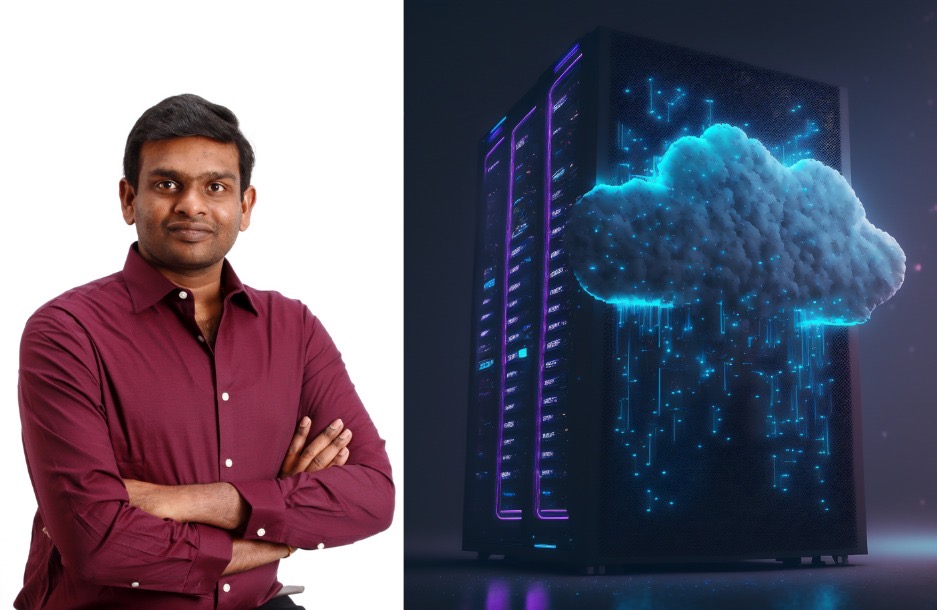In modern times, cloud computing has revolutionized how we store, process, and access data. It actively represents a considerable shift from the conventional IT resource management approach. The technology is a dynamic ecosystem evolving, mainly driven by the surging demand for cloud-based applications and services and the extensive adoption of digital transformation initiatives across different industries. The global cloud computing market is expected to reach 832.1 billion dollars by 2025, with a sturdy % compound annual growth rate (CAGR) of 17.5%.
We talked about the power of connected systems to all with the help of modern cloud computing with Sumanth Tatineni, a cloud expert with over 8 years of experience in the IT industry as a DevOps Engineer with proven expertise in automation, build/release engineering and software development involving cloud computing platforms like Amazon Web Services, Azure, and Cloud Services. Reminiscing upon the old days, Sumanth mentioned that earlier all our data used to stay on local devices and needed to be copied onto drives for portability. It was a time when the idea of having every piece of information easy to access on the go appeared to be exciting.
“Today, cloud computing has become that and even better – becoming a central part of daily life for businesses and individuals alike. Thanks to the ongoing democratization of access and technological advancements, the power of connected systems is accessible to all.”, he added.
But now, we have come a long way. In recent years, the evolution of computing has significantly expanded with different emerging technologies and use cases. Further, Sumanth also talked about newfound resourcefulness from machine learning to artificial intelligence to the role of edge and the advent of serverless architectures.
Going deeper into cloud computing, Sumanth explained that it represents the delivery of a massive spectrum of computing services encompassing storage, databases, networking, analytics, software, intelligent tools, and servers – accessible through “the cloud” or the Internet. This approach gives significant economies of scale, resource flexibility, and faster innovation. What’s particularly advantageous is the pay-as-you-go model; it allows you to pay only for the cloud services you actively use. It can be helpful for businesses, mainly as it results in lower operating costs, the ability to scale up seamlessly as you evolve, and increased operational efficiency.
Based on his practical experience, Sumanth clarified that the achievement of business and individual goals needs informed decision-making and that exemplary cloud service ensures that you leverage the full potential of the cloud to meet your specific needs while also meeting accessibility to everyone. Often, they will be referred to as a “stack” as they technically build on top of each other.
The first type of cloud service is Infrastructure as a Service (IaaS). This is probably the most basic category of cloud computing – as you rent IT infrastructure like networks, operating systems, and storage from a cloud provider based on pay-as-you-go, as mentioned earlier. It is ideal for businesses looking to scale their IT infrastructure fast since it allows resource allocation to match the changing demands. It is cheaper since you are not incurring capital expenditure on physical hardware. IaaS is expected to grow at 30% – the fastest growth rate.
The next one is Platform as a Service (PaaS), with which developers evade the complexities of infrastructure management, making it their go-to choice to create, test, deliver, and manage software applications. It is an on-demand service that removes any burden of managing the servers, networks, databases, and networks and facilitates rapid and mobile app development. This can reduce development costs and time significantly.
Software as a Service (SaaS) provides software applications over the Internet – on a subscription basis. SaaS is the best option for businesses looking for quick access to essential software tools without needing maintenance or installation. It is cost-effective and user-friendly for individuals and companies, especially for applications such as CRM, office software, or other collaboration tools. Interestingly, in 2023 alone, SaaS is expected to result in 208 billion dollars in end-user spending.
Lastly, Serverless Computing complements PaaS by focusing on building application functionality without needing to manage infrastructure and servers continuously. Serverless computing is ideal for businesses or individuals who build highly responsive and scalable applications that reduce operational costs and overhead.
Talking about the benefits of cloud computing, Sumanth highlighted the most important advantage that it helps save money since you don’t have to buy or manage your own data centers or hardware. Additionally, it is a quick and easy self-service with just a few clicks; you can easily adjust your resources, like storage, depending on your needs. IT teams can focus on more critical tasks, increasing productivity. Additionally, individuals and organizations can collaborate seamlessly with easy collaboration and data sharing. Compared to in-house data centers, cloud services use top-notch hardware in secure data centers, which leads to faster applications. It also helps in disaster recovery, data backup, and business continuity by storing data securely in different locations, making cloud computing reliable and with robust measures, technologies, and policies to protect your applications, infrastructure, and data from any possible threats.
Sumanth concluded the insightful discussion by mentioning that modern cloud computing has opened up a world of possibilities for connected systems. With its scalability, flexibility, and cost-efficiency, cloud technology is democratizing access to powerful computing resources. From intelligent data-intensive computing to optimizing power distribution networks and enabling IoT interoperability, cloud computing is driving innovation across industries. He also highlighted, “Cloud computing has truly unleashed the power of connecting systems, empowering organizations of all sizes to achieve their goals efficiently and effectively.”
About the expert: Sumanth Tatineni is a distinguished figure in AI and DevOps with over a decade of experience in the IT industry. From driving automation initiatives for leading Airlines , Financials Institutions to securing certifications from Oracle, AWS, and HashiCorp, Tatineni’s expertise spans different domains. As a current DevOps Engineer at Idexcel and pursuing an MBA in Chicago Booth of Business, Tatineni is a pioneer in defining the future of technology. His visionary approach displays his thought leadership and expertise in shaping the connection of future IT. He is not just an industry expert but also a prolific author of books extending to award-winning journals.




